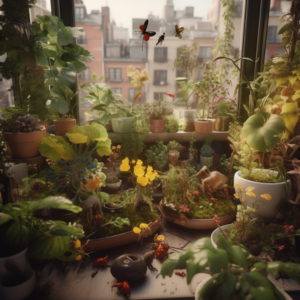Introduction:
Greetings, fellow plant lovers! Orchids, with their exotic beauty and wide array of species, are the crown jewels of indoor gardening. However, they are often seen as complex and intimidating to grow. Let’s dispel those myths and guide you through the delightful journey of growing orchids.
Understanding Orchids:
Orchids are one of the largest families of flowering plants, boasting thousands of species and hybrids. They can adapt to a variety of environments, from rainforests to deserts. The most commonly grown indoor orchids are Phalaenopsis, Cattleya, and Dendrobium orchids.
- Orchid Light Requirements:
Orchids need good light to bloom but are sensitive to direct sunlight. The trick is to provide bright but indirect light. A north or east-facing window is usually ideal.
- Orchid Watering:
Overwatering is the most common reason for orchid failure. Orchids prefer to dry out between watering. Water thoroughly, then allow the orchid to drain fully.
- Orchid Temperature:
Most orchids prefer daytime temperatures between 65°F and 75°F, with nighttime temperatures around 55°F to 65°F. Providing this temperature drop can encourage blooming.
- Orchid Humidity:
Orchids thrive in humidity levels of 40-70%. Use a humidity tray or a humidifier if necessary, especially during dry winters.
- Orchid Fertilizer:
Feed your orchids with a balanced orchid fertilizer. Fertilize weakly, weekly during the growing season, and reduce feeding during the resting period.
Orchid Potting:
- Orchid Potting Media:
Orchids need well-draining potting media. Most growers use a bark-based or sphagnum moss-based mix.
- Orchid Repotting:
Repot your orchids every two years or when the potting medium breaks down. Also, repot if the orchid has outgrown its pot or if you notice any rot or pests.
Orchid Troubleshooting:
- Yellow Leaves:
Overwatering is the common cause. Ensure the potting medium is well-draining and the plant is not sitting in water.
- No Blooms:
Insufficient light, low temperatures, or lack of fertilizer can result in non-blooming orchids.
- Orchid Pests:
Mealybugs, spider mites, and scale insects can infest orchids. Use an organic insecticide or neem oil to control these pests.
Conclusion:
Orchids, with their mesmerizing beauty and impressive variety, are a treasure to behold in your indoor garden. With the right care and attention, they can bloom spectacularly and bring you endless joy. So, don’t let the myths deter you. Dive into the enchanting world of orchids, and embrace the joy they bring to your indoor gardening journey.
Remember, gardening is not just about growing plants; it’s about growing with them. So, keep learning, keep exploring, and keep growing. Happy Orchid Gardening!

